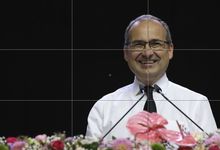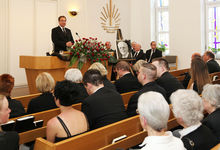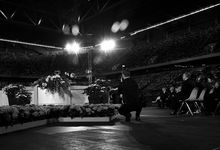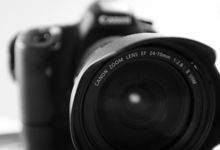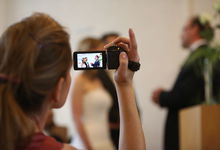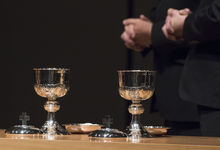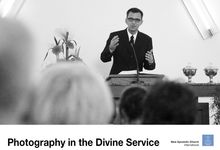Getting the picture (8): Demanding subjects
From portraits to group photos, from the concert hall to the church building: every subject has its own requirements. But there are tips and tricks for any situation in which divine service photographers may find themselves.
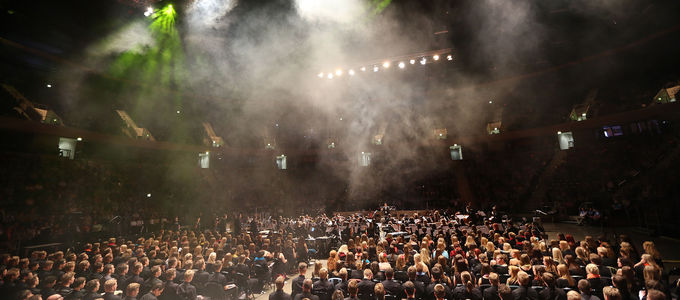
Nearer, still nearer—beyond the centre—compress your photos: these are image composition tips that apply to nearly every photo. This was the focus of the previous edition. Today we will talk about tricks for some very specific subjects.
People should always be in the middle when taking photos in divine service and in congregational life. And in so doing, the following applies to portraits:
- eyes are the window to the soul: always focus on these.
- tipping the subject’s head upwards ever so slightly avoids double chins.
- meet children at eye level: crouch if necessary.
- lens with 70 to 150 mm focal length—wide angle distorted.
- a shutter speed shorter than 1/160 second prevents camera shake.
- a large aperture (lower number) blurs the background.
The officiant is one of the most frequently photographed people:
- too static while singing—catch him during the sermon (consult with him beforehand!)
- nervous before the sermon—he will be more relaxed shortly before the closing benediction.
- prevent closed eyes with continuous shots.
Though not popular with everyone, sometimes group photos are simply par for the course:
- they work best with wide-angle lens (30–50 millimetres).
- rather than notice it afterward: is everyone’s clothing, jewellery, and hair in order?
- the trick for the right look: all eyes closed, then open after “one, two, three!”
Taking photos at a concert? These venues have their own set of parameters:
- flash stays off in order to capture the local lighting scene.
- set to high photosensitivity (ISO)
- if you know the programme ahead of time, you can work out the details better.
Although church buildings won’t run away, they still require some attention when taking photos:
- attention! Falling lines—which may cause the building to tilt backwards: subject at eye level, camera absolutely level, sufficient distance from object.
- wide-angle lens for overall photo, telescopic lens for the details.
However, subjects are just the beginning. After all, some events offer such opportunities in droves. The next episode of this series will deal with special occasions. These are church acts that usually have special meaning in the lives of the people involved.
Photo: Oliver Rütten
Article info
Author:
Date:
Keywords:
Andreas Rother
29.07.2019
Media,
Divine service,
Music,
Congregational life


